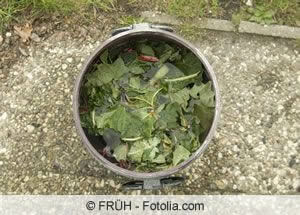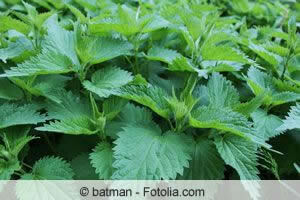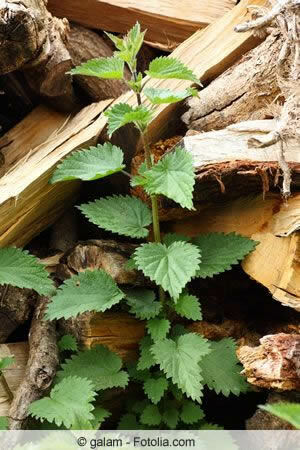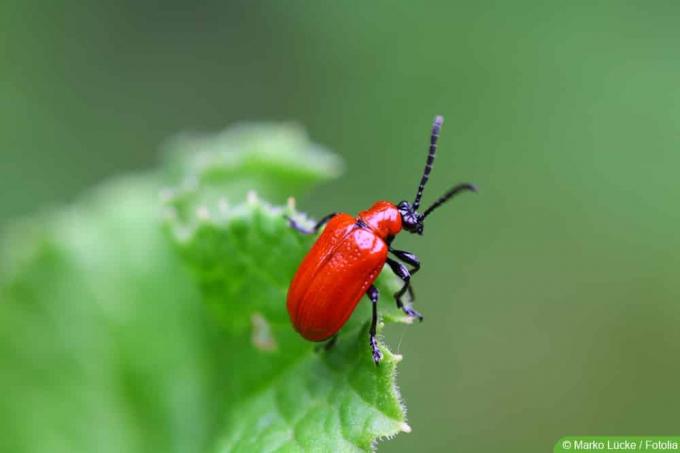

Table of contents
- Slurry or broth?
- tools and materials
- nettle manure
- Attaching the nettles
- Regular stirring
- Diluting the nettle manure
- watering the plants
- Effect of nettle manure
- nettle broth
- Conclusion
The nettle plant is popularly believed to be one of the magic plants and is a wonderful plant that many hobby gardeners decried as a weed. It can be so helpful in the garden. Our ancestors used their liquid manure and some grandmothers will tell their grandchildren how they had to prepare the nettle liquid manure as a young girl. The stinging nettle and its manure and extracts are effective means that have proven themselves both as a biological fertilizer and as a remedy against aphids.
Slurry or broth?
In many places, hobby gardeners do not really agree on which approach can or must be used against aphids in order to achieve results. Both nettle manure and nettle broth are used against aphids. Nettle manure as a tonic for the plants so that they can better defend themselves against the aphids can and nettle broth as an insecticide directly against the sucking aphids and their eggs and larvae works.
tools and materials
The same materials are required to make nettle manure and nettle broth:
- Wooden tub, rain barrel or barrel
- thick gardening gloves
- secateurs
- garden sprayer
- garden hose
- long wooden stick for stirring
- Grid or lid to cover the vessel
- old board or lid
- rock powder or valerian extract
- alternatively: sprigs of lavender or other fragrant flowers
Tip:
Do not use a metal container to attach the stinging nettles, as chemical processes are set in motion between the metal and the stinging nettle manure.
nettle manure
Nettle slurry is more about using the silicic acid and nitrogen it contains and not about the formic acid from the stinging cells of the nettle. The liquid manure serves to strengthen the plants infested with aphids.
Attaching the nettles
The nettles should be cut during or before flowering. Approximately 10 kg of fresh nettles or 1 kg of dried nettles are cut to approx. given 50 liters of water. First chop the nettles. You can use all parts of the plant, including the old stems. Then layer the chopped stinging nettles layer by layer in the container provided, which should be in the sun if possible and ideally far from the house in the farthest corner of the garden. If the vessel is in the sun during fermentation, the process will go faster. After each layer, tamp down the nettles and add the next layer of plant material until all the nettles are in the jar. Then fill the container with rainwater or, if this is not available, with tap water. Finally, cover the container with a grid or rabbit wire so that no animals can fall into the liquid manure. So that no leaves can fall in, it is best to place a board or a lid over it.
Tip:
Only fill the vessel to four-fifths full, as the manure will begin to ferment over time, creating foam that takes up space.

Regular stirring
Now stir the liquid manure well every day so that sufficient oxygen can enter the fermentation process. Once this process begins, bubbles form and rise. Finally, foam forms on the surface of the manure. In addition, there is a very unpleasant odor that you can contain and bind with a little valerian flower extract or a handful of rock flour. Alternatively, you can use sprigs of lavender with flowers and other strongly scented flowering plants instead. Don't forget to stir well every day. As soon as the liquid manure stops foaming, no more bubbles appear and it has turned dark in colour, it is ready. Until then there are approx. 12 to 14 days have passed.
Diluting the nettle manure
The finished nettle manure is now diluted with water in a ratio of 1:10 for older plants and 1:20 for seedlings and young plants.
watering the plants
On cloudy days, pour these mixtures onto the root area of each aphid-infested plant. This strengthens them from the inside out against the sucking insects. You can also use it to water plants that are not yet infested with aphids. Because nettle manure is a very good fertilizer and makes the plants resistant, so that the aphids can harm them less or not at all.
Tip:
Do not water the nettle liquid manure in blazing sunshine. Otherwise the leaves will burn if some manure gets on them.
Effect of nettle manure
The nettle manure acts like a mild, harmonious nitrogen fertilizer. It has a healing and balancing effect, stimulates the formation of chlorophyll and promotes growth. If the plants are healthy, pests such as sucking aphids can hardly harm them.
Which plants can be watered with it?
- most of the flowers
- shrubs
- trees
- indoor plants
- vegetable plants
Which plants should not be watered with it?
- Garlic
- onions
- Peas
- beans
Why does the liquid manure have a strengthening effect?
In nettle manure, the nitrogen that plants, such as heavy-duty vegetable plants, need for their growth and fruit set is mostly in the form of ammonium ions. Due to the high pH of the nettle manure, the ammonium ions are absorbed more efficiently by the plants.
nettle broth

The stinging nettle broth, sometimes also called stinging nettle cold water extract, is prepared in the same way as the stinging nettle liquid manure. However, only 1 kg of fresh nettles are added to 5 l of water. The procedure is the same as for preparing the liquid manure, but with the difference that the broth only has to stand for 12 to 24 hours. It must not start to ferment yet! Because here value is placed on the nettle poison, which is supposed to drive away the aphids. This nettle broth is sprayed undiluted on the plants infested with aphids. However, as with liquid manure, you should make sure that you do not spray the plants in the blazing sun. An overcast day is preferable! You should also make sure that you spray the plants regularly and even when the aphids are no longer visible. Never use the fermented nettle manure to spray the plants, just use the broth.
Tip:
In addition to nettles, thyme, sage, wormwood, tansy and thyme are also suitable for pest control Lavender, the cold water extract of which is made in exactly the same way as the nettle broth become.
Why is nettle broth effective against aphids?
The stinging nettle has so-called stinging hairs, which act as a protective mechanism against predators. These are predominantly present on the upper side of the leaf. The long, unicellular tubes have embedded silica in the walls, making them very brittle like glass. In the lower, slightly more flexible end is the so-called fuel liquid or rather the nettle poison that causes itching and burning on the skin. The liquid - the nettle poison - is mainly a cocktail of formic acid, acetylcholine, histamine, sodium formate and serotonin. In humans, approx. 100 ng of the liquid to get the well-known effect. This liquid works very well as a natural insect repellent. By crushing and pounding the nettles and soaking them in water, the liquid is released.
Conclusion
Nettle manure and nettle broth are easy to prepare yourself. You should just be careful not to use the liquid manure undiluted, while you can use the broth undiluted. It is also important that you do not use a metal container for the preparations, otherwise a chemical reaction will be set in motion. And also make sure that you put on gloves, both when picking the nettle and when preparing the liquid manure. Then nothing should go wrong!
 garden editorial
garden editorial I write about everything that interests me in my garden.
Learn more about plant pests

White spots on leaves: what to do?
Whether in the home or in the garden, white spots on the leaves of your favorite plants are always a cause for concern. However, the causes can often be eliminated quickly. This guide summarizes the most common triggers and gives tips for quick help.

Cherry laurel has yellow eaten leaves: what to do?
Despite the robust nature of Prunus laurocerasus, it is occasionally attacked by pests and fungi. An infestation can be recognized by feeding damage and the discoloration of the leaves to yellow. You can find out how to combat and prevent the accumulation here.

Fighting grubs | Protect raised bed & lawn
Larvae of various species of beetles, grubs, can do a lot of damage in the garden. They live in the ground for several years and prefer to feed on roots. We present effective methods to combat the voracious pest or to effectively prevent an infestation.

Worms in cherries - 8 tips against maggots in cherries?
Worms in sweet cherries can spoil your appetite. It is a major nuisance when the entire cherry crop is affected. With these tricks you can contain the pest infestation and ensure that the insects do not multiply any further.

Fighting lily beetle - 11 effective home remedies
Lilies in the garden are beautiful to look at. There are the greatest types and varieties, all of which somehow have something special. Lily lovers can draw from the abundance of offers and look forward to the floral splendor. Lilies are actually quite hardy. There are few diseases and pests that can cause damage. However, the lily chicken can spoil the splendor.

Combating fungal infestation on trees: how to remove tree fungi
A tree fungus does not appear threatening, sometimes it is even interesting to look at. But that is deceptive. What we see is only the fruiting body, the mycelium is deep in the wood and destroys it slowly but purposefully. Eventually it kills the strongest tree.
